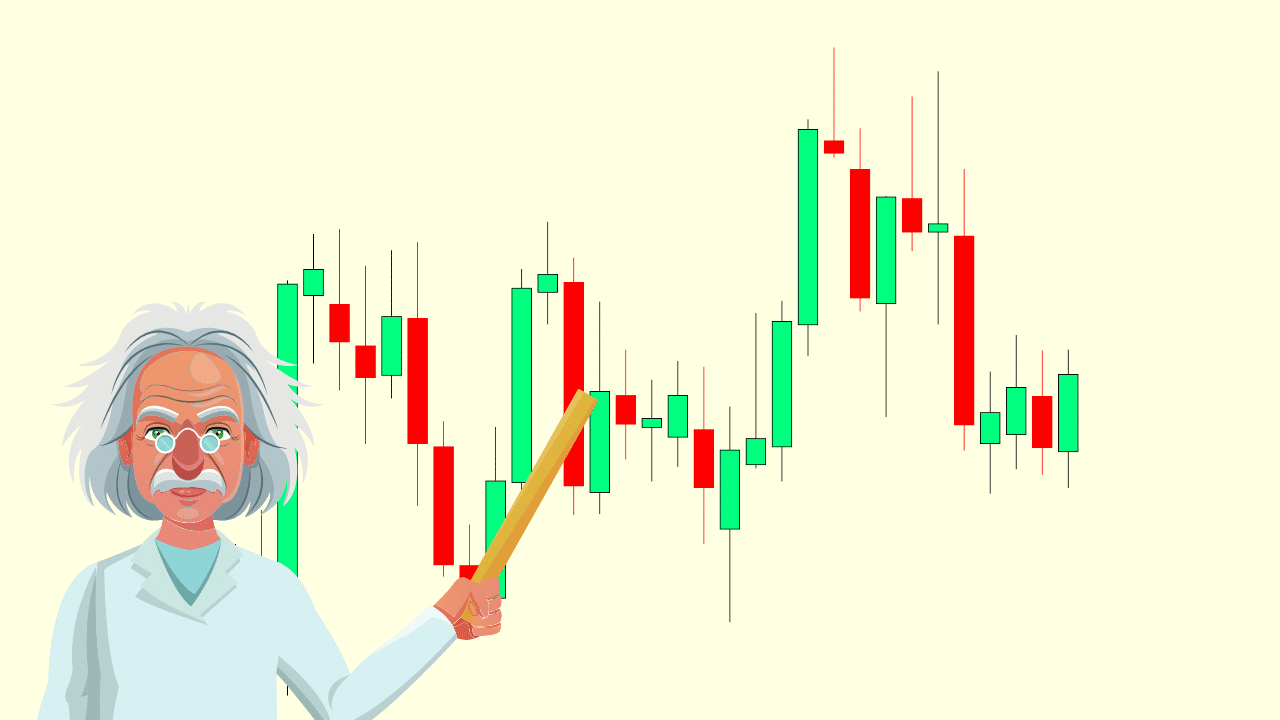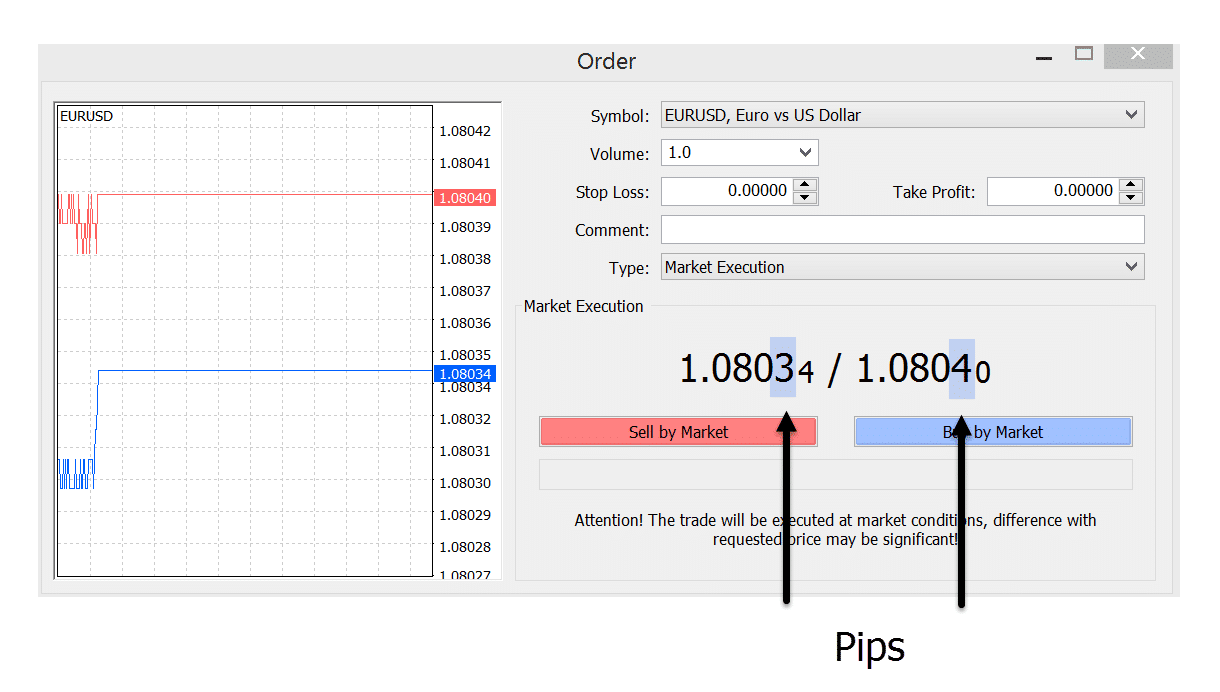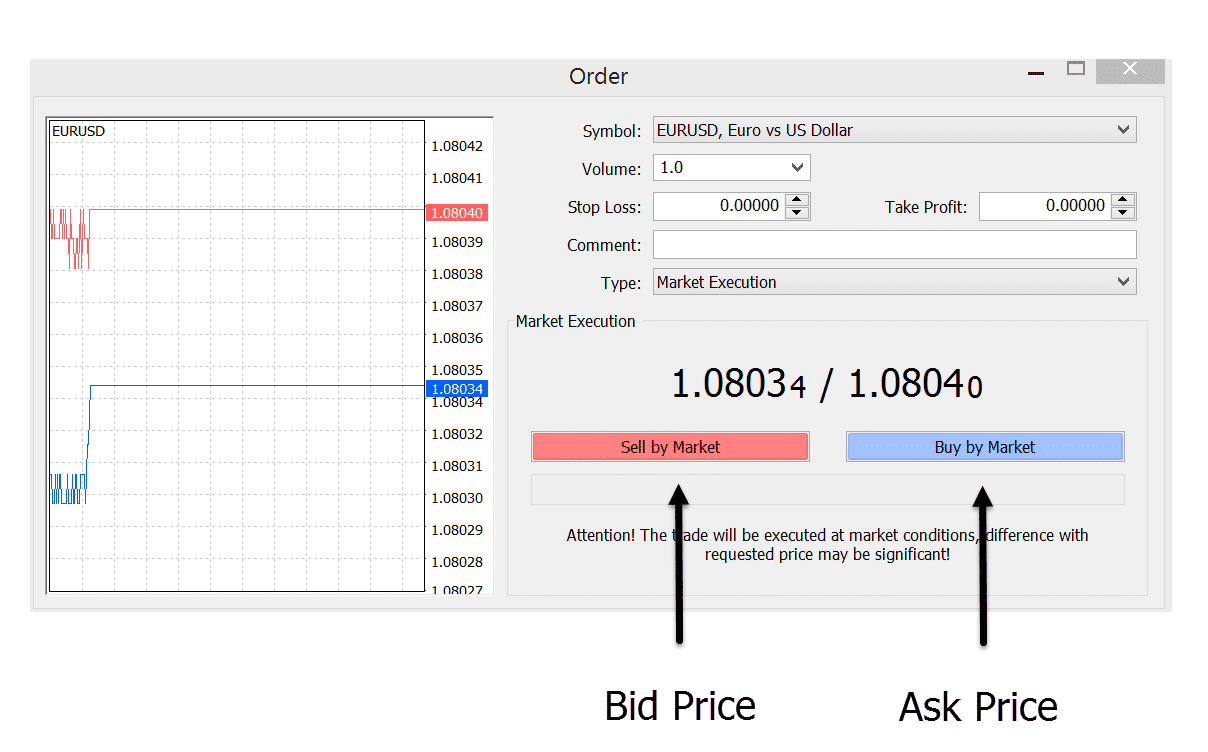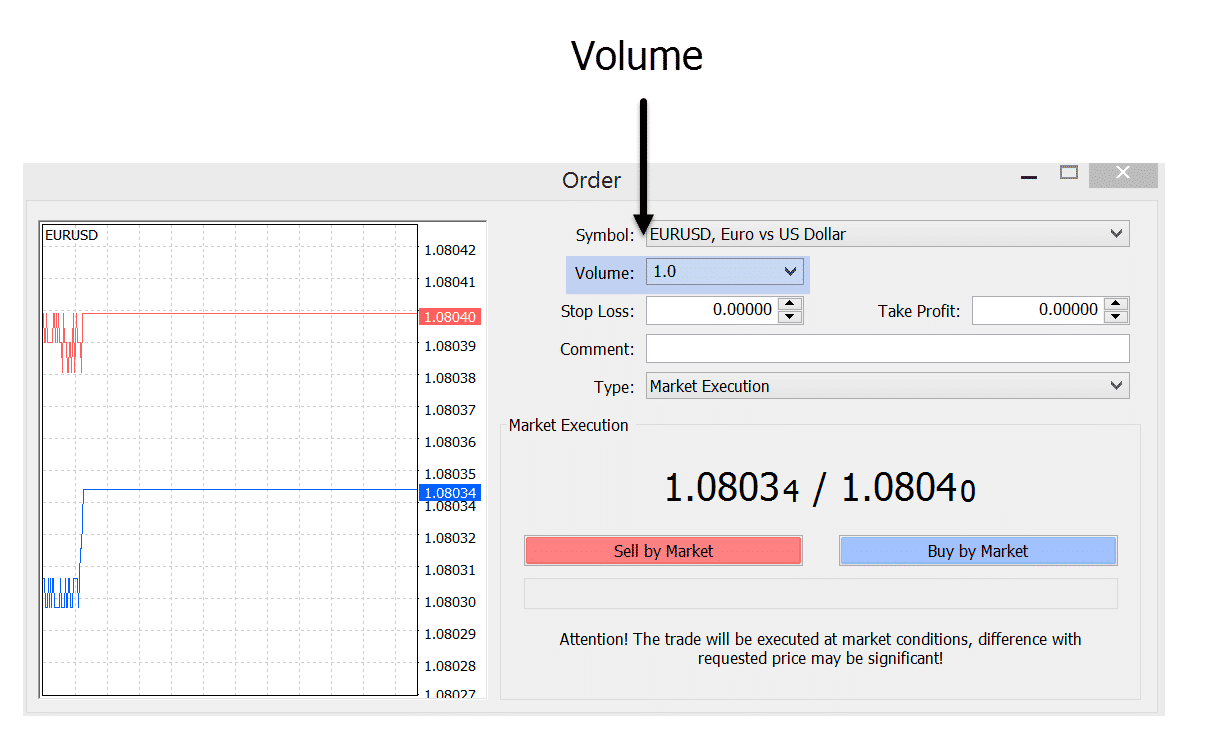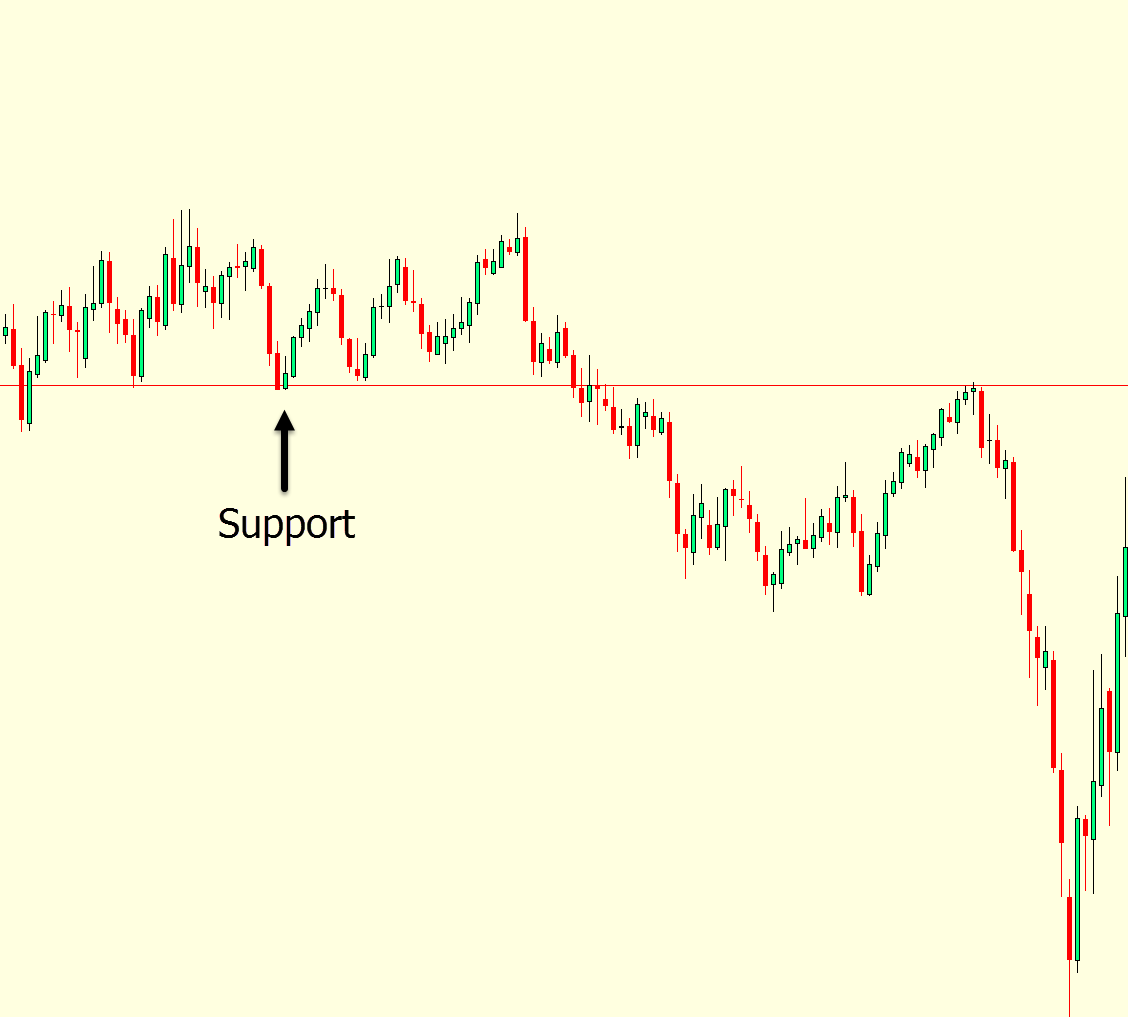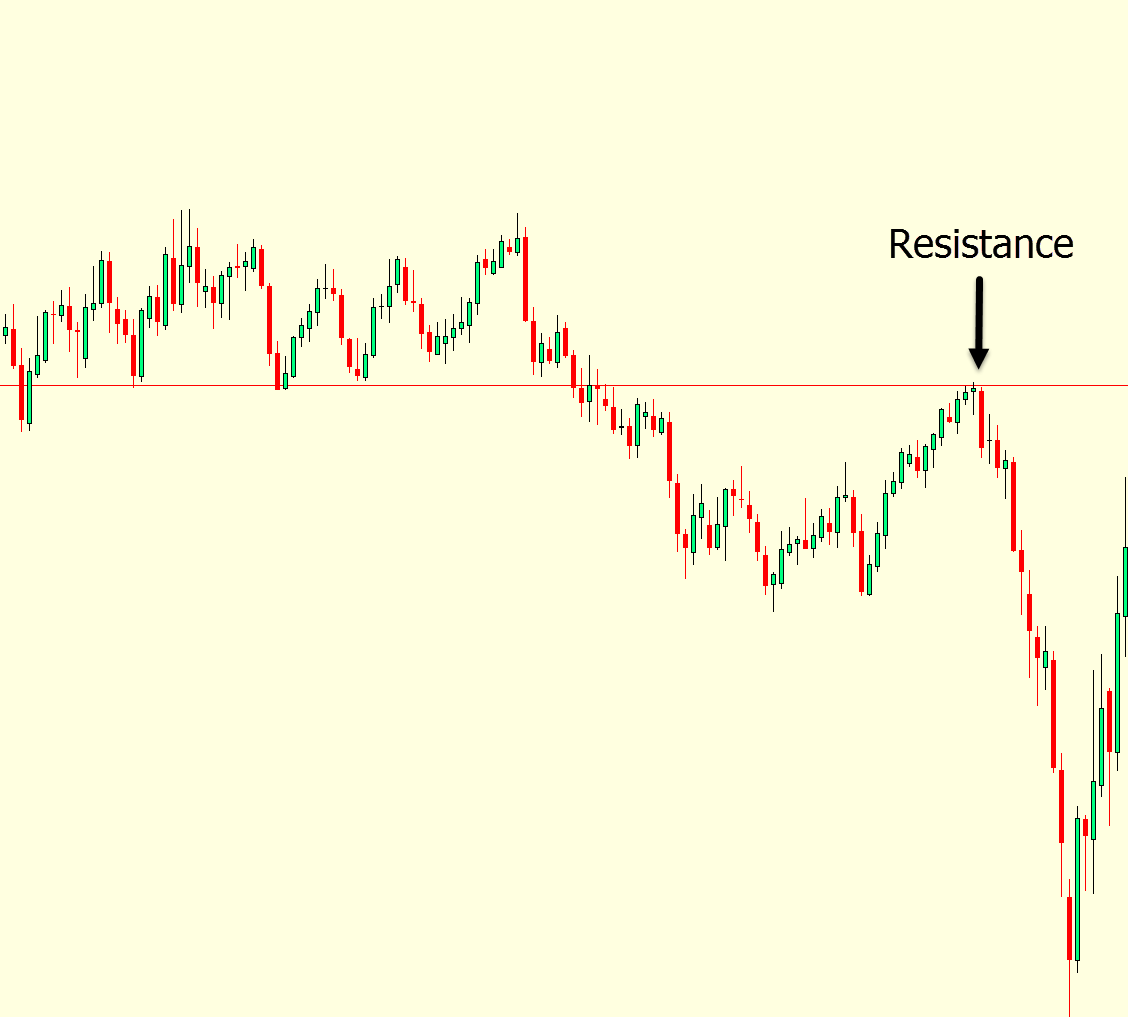Have you ever read a trading blog or forum and thought what is all this Forex terminology that is being used? What do all these different terms mean?
In this post we go through the ten most commonly used and misunderstood trading slang terms and what exactly they mean.
NOTE: Get the Free Forex Terminology PDF Download Below.
Table of Contents
1. Pip
Pip stands for “Percentage in Point”.
A pip in the Forex market is a common measurement for how far the price has moved.
Whilst most brokers these days go to the fifth decimal, a pip movement is the fourth decimal. For example; 0.0001 is one pip.
The image below shows where you can see the pip amount in your MT4 and MT5 order window.
2. Spread
The spread is the difference between the bid (sell) and ask (buy) prices.
This difference is the spread you will pay when making your trades.
This is crucial for you to understand because each market and Forex pair will have hugely varying spreads.
The spread can severely cut into your trading profit or loss depending on a number of factors. These include the market you are trading and the type of strategy you are using.
Another huge factor is the broker you are using. If you are not using a broker with small spreads, then you can often be paying far too much just to make your trades.
3. Bid and Ask price
The bid and ask prices can vary widely depending on what market or Forex pair you are trading.
When buying you will be paying the ‘Ask’ price. This is always a little higher and has the ‘spread’ from your broker added into the price.
When you are selling you will receive the bid price that is the lower of the two quotes.
4. Volume
Volume in your MT4 and MT5 trading terminals refers to the amount you want to trade.
As the image shows below you can set your own volume amount to trade.
Volume is traded in different lot sizes as explained just below.
5. Lot size
Your trade size is referred to in ‘lots’.
One standard lot refers to 100,000.
For example; if you trade Forex pair XYZ for one standard lot, you are actually trading 100,000 of that Forex pair.
There are smaller lot amounts that will allow you to trade with smaller amounts than the 100,000 standard lot.
Most brokers offer micro lots: 1,000 and mini lots: 10,000.
6. Slippage
At times you will find that the price you tried to enter a trade was not the price that you had your order executed. This is called slippage.
The largest factor that creates slippage in the markets is large volatility. This can often be caused by news announcements or unexpected market shocks.
7. Going long/short
If you read any trading blogs or trading forums you would have seen traders discussing going long or going short.
This is because when trading CFD’s profits can be made from price moving both higher and lower.
When a trader is going ‘long’ it means they are buying and are looking for price to move back higher.
When a trader is going ‘short’ they are selling and looking for the price to move lower.
8. Bullish and Bearish
Ever heard of a bullish market? Or an economist say we are now in a bear market?
Being either bullish or bearish refers to what side of the market you are on.
If you are bullish you think that the price will rise.
If you are bearish you think that the price is likely to fall.
For example; a bullish trader may say; “I have just entered a long (buy) trade with the strong trend higher”.
9. Support and Resistance
One of the most popular and widely used technical analysis techniques in the stock and Forex markets is support and resistance.
As price moves up and down price action traders are constantly analyzing the prices movements.
Technical analysis and price action traders believe that the price moves inline with the fundamentals.
Support levels are demand levels where price can be seen on the chart to have found ‘support’.
On the flip side, resistance levels are seen as levels of supply and areas where price has found resistance to the move higher.
Support Example
Resistance Example
10. Currency ‘Pair’
Currencies are not able to be purchased or exchanged individually.
This is where currency pairs come in.
A currency pair is the two currencies that are being exchanged.
For example; the EUR/USD is the currency pair of the Euro and USD being exchanged.
NOTE: Get the Free Forex Terminology PDF Download Below.
